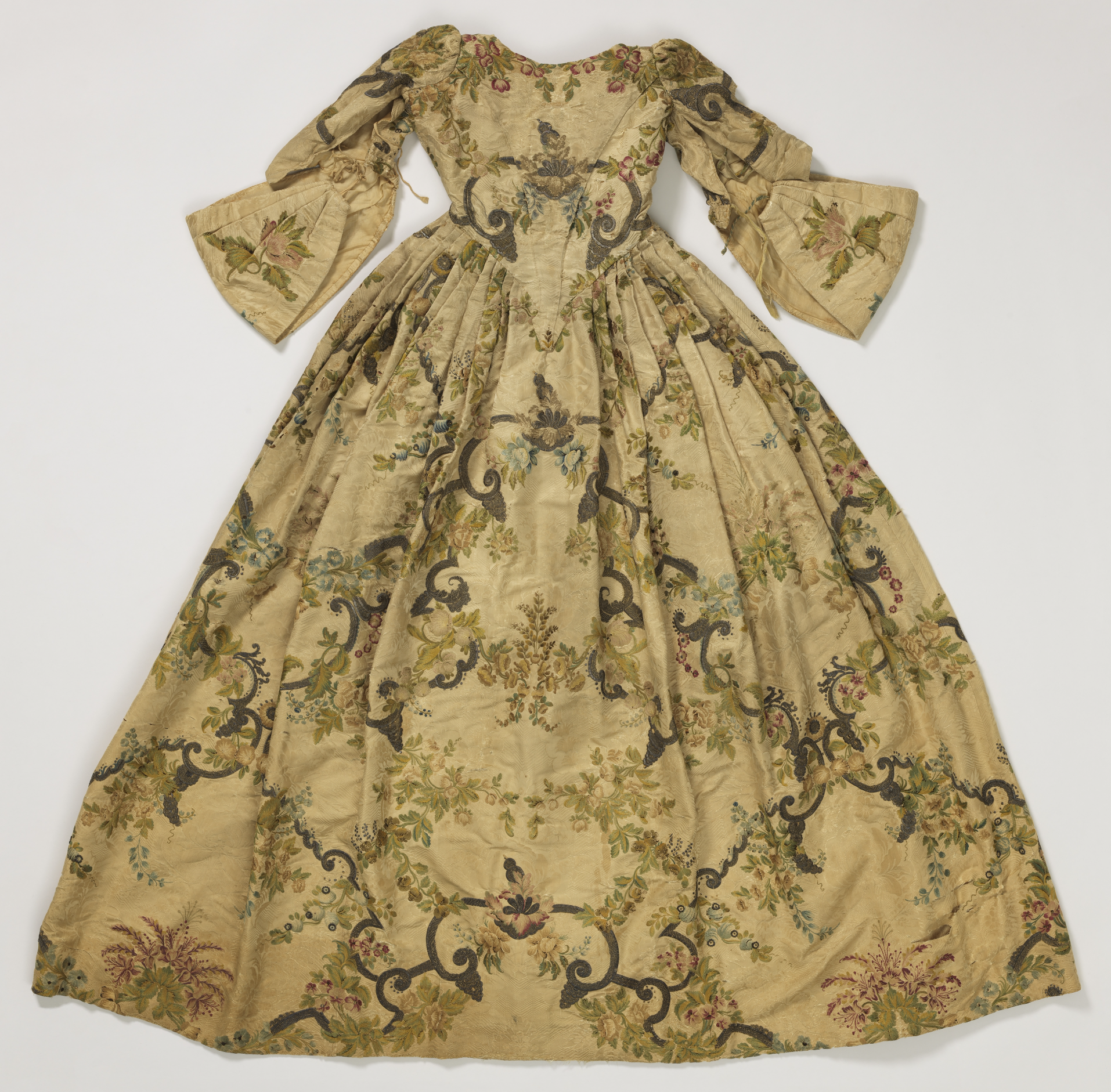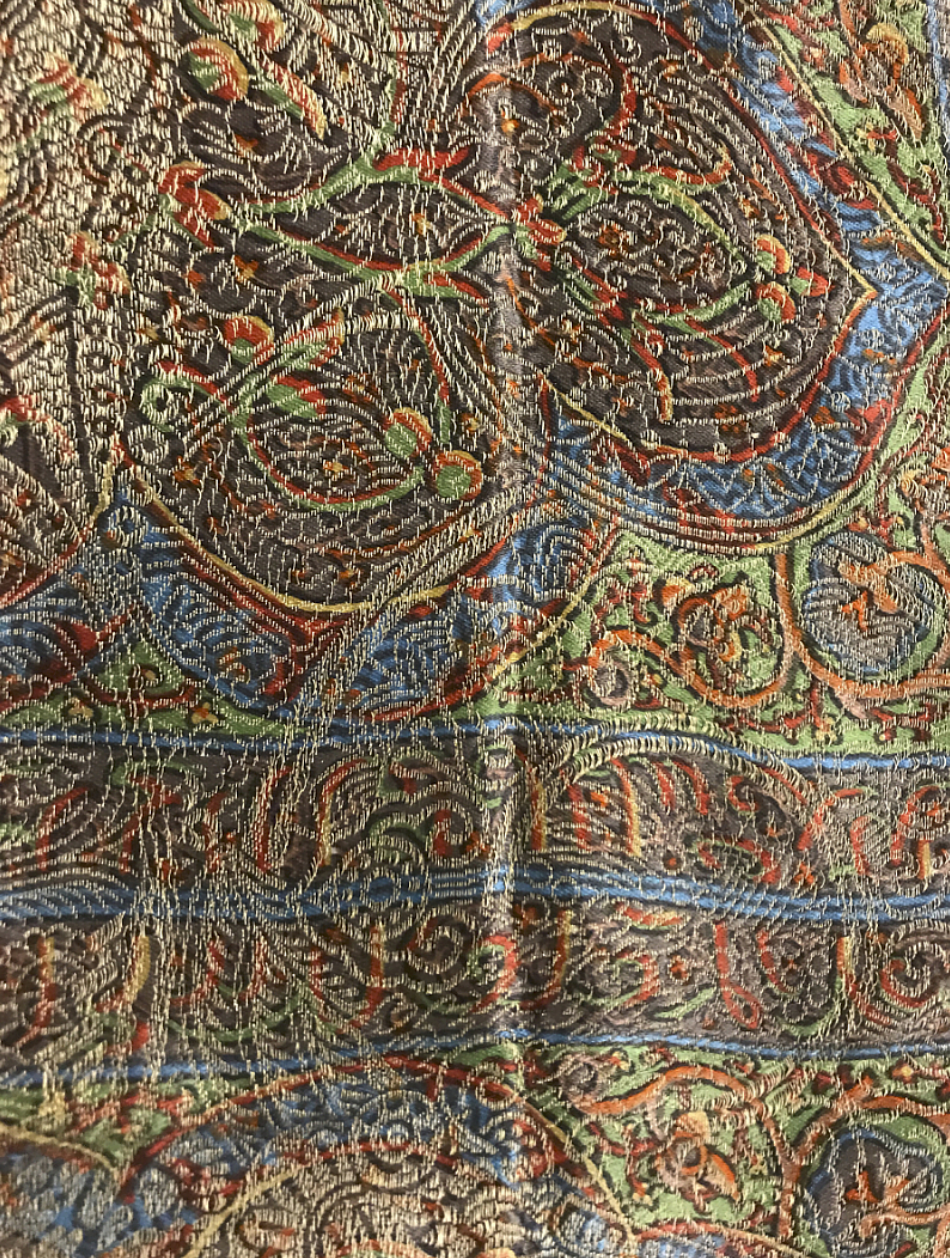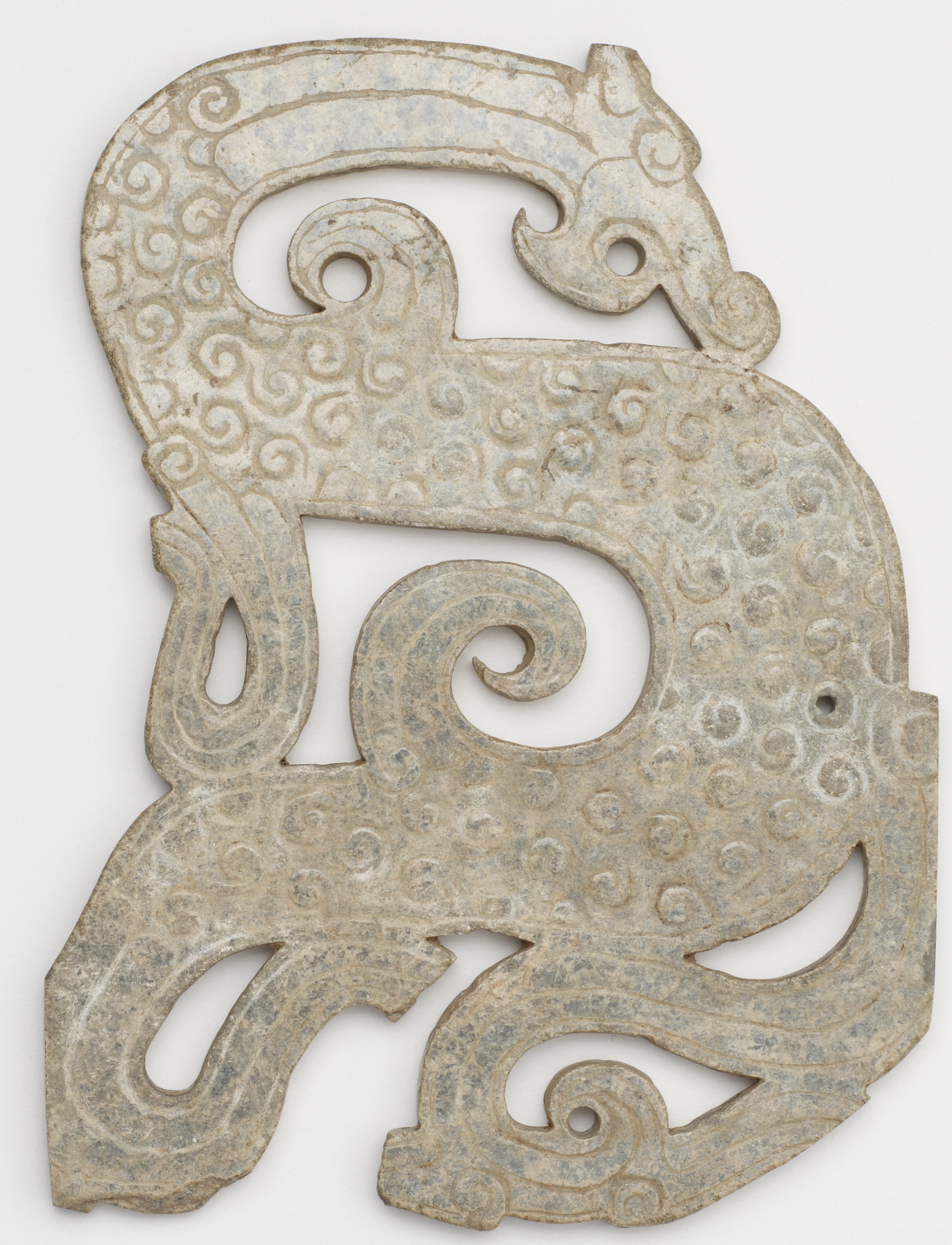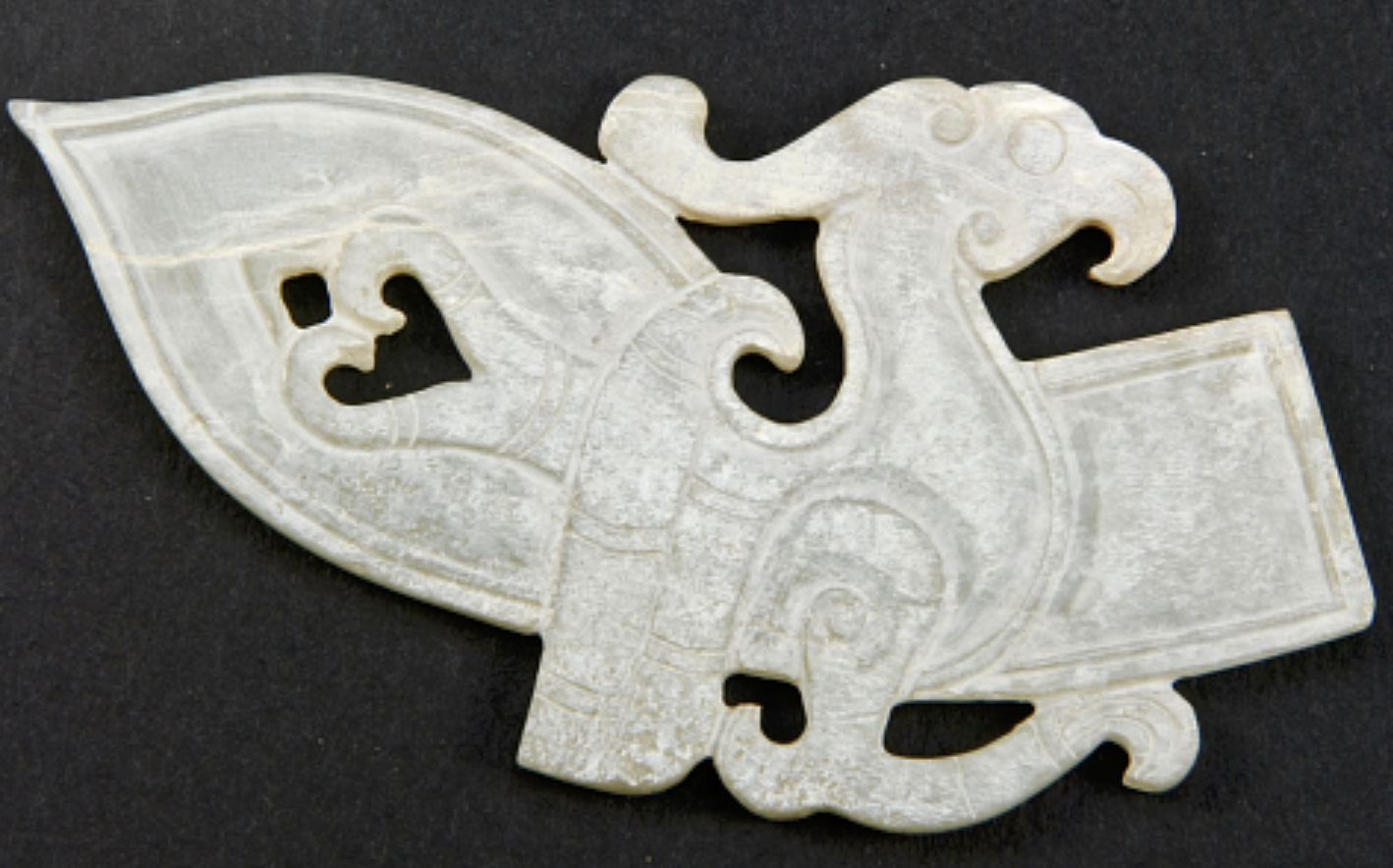
Dress
Year: 18 Century
Place: France
Silk was a popular 18th-century material for fine dresses in Western countries such as France.
The clothing would often be richly and intricately embroidered, making them individual bespoke pieces intended for formal wear and sophisticated events. Having detailed, distinct items of clothing was ideal for the gentry and aristocracy of the 18th century.

Metal Thread Dress Silk
Year: 1925
Place: New York
This is a sample cutting of an evening dress, made from silk and metallic yarn fabrics.
This was made with a jacquard machine, using a mechanism where each row of a textile pattern would be replicated on a row of punch cards. Similar to today’s computer programmes, the intention was to remember the pattern and replicate it.
Jade (nephrite)
Year: 475-221 BCE
Place: Changsha, China
In Chinese tradition, the dragon is a sacred symbol which also bestows status and power to the wearer. Jade has a noble and rare reputation and is also thought to bring good luck. Therefore, Jade is a very popular material in Chinese heritage.


Phoenix Carving
Year: N/A
Place: China
Like the dragon, the phoenix is also an integral and long-standing part of traditional Chinese culture.
Phoenix symbolism has been discovered in China as far as 3,500 years ago, on Shang Dynasty (1600 to 1050 BCE) bronzes. The artistic depiction of a phoenix is thought to give people spiritual power, as a symbol of the Chinese nation.

Necklace with pendant
Head – Male – Amulet
Year: 1975
Place: Nunavut, Canada
This 20th-century stone-carved amulet originates from an Inuit maker.
The pendant is attached onto a strip of rawhide. Creating jewellery out of natural materials like this, in small batches, is one of the most sustainable and environmentally friendly methods.

Brooch/Pin
Year: 1952
Place: Navajo Country, USA
When looking at historical fashion, it’s interesting to see repetitions in popular aesthetics.
This Hopi Pueblo silver pin, depicting a sun face with a flower pattern, was created in the early 20th century. In 2022 the pattern closely resembles the ubiquitous, colourful work of post-war artist Takashi Murakami.

